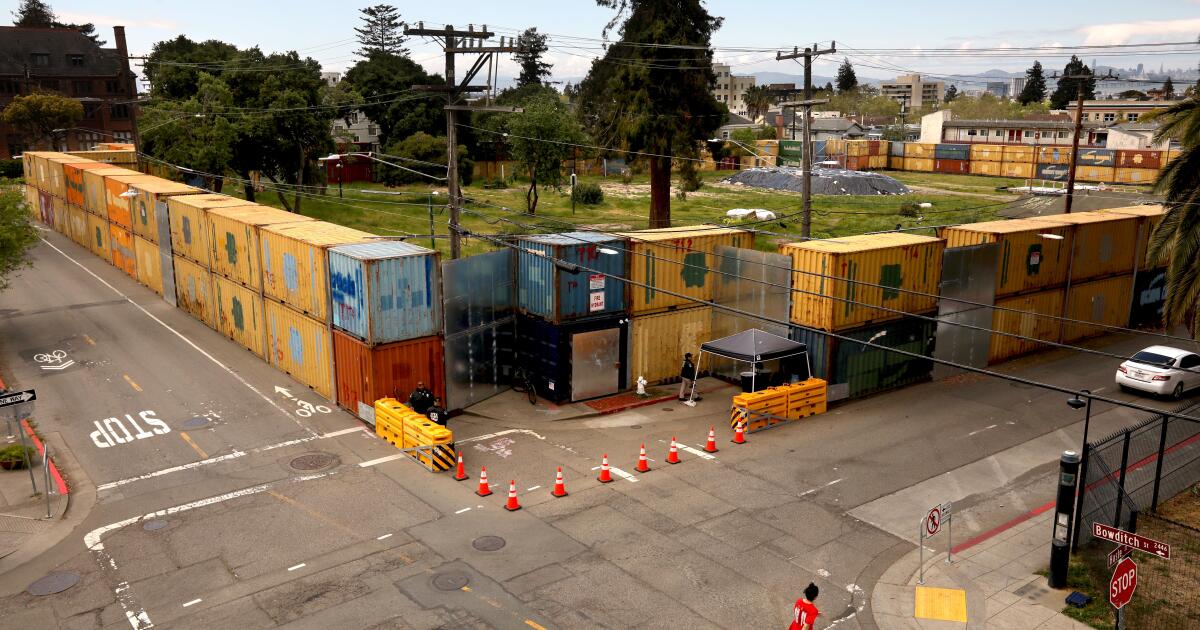California leaders reached an tentative agreement on Tuesday night on the state budget, which depends on the lawsuit of Governor Gavin Newsom that the legislature approves a housing reform proposal.
The negotiations of the eleventh hour about the expense plan, which enters into force on July 1, speaks of the political challenge of reviewing the long -standing environmental regulations to accelerate the construction of housing in a state controlled by Democrats.
The Party has been reluctant to adjust the Environmental Quality Law of California, or approve unique exemptions, despite the pressure of the governor and the national criticisms of a law that the defenders of the reform say that it has hindered the construction capacity of California.
The proposal is among a series of policies that journalists and Democratic legislators advance in the next few days as part of the budget of $ 321.1 billion. The agreement reflects the resistance of the legislature to the cuts proposed by the governor to reduce a budget deficit of $ 12 billion expected in the next year, citing uncertainty about the scope of the financial problems of the State.
“We appreciate the solid association with the legislature to reach this budget agreement,” said Izzy Gardon, Newsom spokesman. “The governor's signature depends on the end of the legislation to cut the bureaucracy and unleash the development of housing and infrastructure throughout the state, to build more, faster.”
Consensus arrives after weeks of conversations on how to compensate for the deficit, caused by excessive spending in California and start addressing even greater anticipated financial problems in the future, even of possible changes in federal policy.
The tentative agreement depends largely on requesting money borrowed, taking advantage of state reserves and changing funds to close the deficit. By reducing and delaying many of the cuts proposed by the governor, the budget continues a practice in the State Capitol to save state state pain programs while avoiding assuming the long -term budgetary problems of California.
The Republican leader of the Assembly, James Gallagher (R-Yuba City), said the documents of budget agreement on the financial problems of the State.
“We are in this situation due to excessive spending,” Gallagher said. “We have made long -term commitments to the programs that the Democrats have defended, and now, just as everyone warned, the money is not there to support them all, and they do not want to reduce their program that they helped expand.”
The cuts of the legislators and the governor finally agreed to reduce the expansion of medical care sponsored by the State to undocumented immigrants and will restore asset limit tests for Medi-Cal affiliates. However, the final agreement achieves less savings for the State that Newsom originally proposed.
The Plan restores the cost of living settings for child care workers, which the governor wanted Nix, and rejects his call at overtime limit for home caregivers.
Democrats in the Legislature successfully pressed to provide another $ 500 million in funds for homes for homeless, assistance and prevention subsidies. The governor originally resisted giving more money to the counties, which he has punished for not being able to show results for the billions of dollars in state funds they have received to reduce the lack of housing.
The President of the Assembly, Jesse Gabriel (D-Encino), retreated the idea that the Legislature has not made a “true adjustment of the belt.” Legislators are trying to balance compassion and fiscal responsibility before making drastic cuts to security network programs in which Californians trust, he said.
“That is the balance we are trying to attack here with this budget of being responsible, to focus on the work we need to do independently, but also understanding that there is a rather high delta of uncertainty for many reasons,” Gabriel said.
The budget also preserves the Newsom Plan to provide $ 750 million to expand the Fiscal and Television Fiscal Credit of California, a proposal backed by Hollywood Film Studios and unions that represent workers in the industry.
The tentative agreement is expected to serve as a precursor for more challenging financial discussions on additional reductions in the coming months.
California expects to lose federal funds of the Trump administration and state officials predict a potentially greater financing dilemma in 2026-27.
Here are few key elements of the Budget Agreement, detailed in summaries of the Agreement and Legislation:
A housing warning
Colloquially described as a “poisonous pill” inserted in the Budget Law, the agreement between the Legislature and the Newsom will only become law if legislators send to the governor a version of a proposal initially presented by Senator Scott Wiener (D-San Francisco).
The Wiener bill is expected to decrease the number of construction projects that would require a complete environmental review under CEQA and that the environmental impact report development process is more efficient.
Together with another proposal that could exempt more developments from Urban Housing of CEQA, legislation could mark a significant change in state policy that facilitates construction.
Newsom is effectively forcing Wiener's proposal by refusing to sign a budget agreement without CEQA exemptions. The proposal was still written from Tuesday night.
The governor declared high objectives to build more homes on the path of the 2018 governor campaign, but has not caused enough construction to meet the demand for housing and make the houses more affordable.
The New York Times columnist Ezra Klein effectively called the inaction in California caused by the Environmental Law of Marquee of the State and the lack of political will in his recent book “Abundance”, which increased the pressure on the governor and other Democrats to reconsider their approach and boost the most substantial fixed fixed this year.
The CEQA reform bill must be approved on Monday under the Budget Agreement, which omits a separate news call to rationalize the Delta Tunnels project.
Changes in Med-Cal financing
Medi-Cal costs are causing important problems for the California budget. The challenges come from a higher price label than expected for the expansion of medical care sponsored by the State to all undocumented immigrants eligible for income and medical care for other affiliates.
Newsom's budget proposal in May suggested substantial ornaments for the health program for undocumented people. Its plan included freezing a new registration as of January 1, requiring that all adults pay the monthly premiums of $ 100, eliminate the benefits of long -term service and reduce complete dental coverage. The changes offered minor savings in next year, but they could save billions of dollars in future years.
Legislators finally agreed to demand undocumented immigrants from 19 to 59 years to pay $ 30 monthly premiums from July 2027. They plan to adopt the Newsom registration limit, but they give people three months to re -apply if their Lapes coverage instead of immediately reduce their eligibility.
The Democrats agreed to reduce complete dental coverage for adult immigrants who are undocumented, but delayed the change until July 1, 2026.
State leaders agreed to restore much higher limits than the governor originally proposed in assets that Medi-Cal beneficiaries can possess and still obtain coverage. The new limits would be $ 130,000 for individuals and $ 195.00 for couples, compared to the previous limits of a few thousand dollars.
They also adopted Newsom's proposal to withdraw the Medi-Cal benefits for specialized weight loss.
Changing money
The negotiations resulted in the less general spending of funds than the legislature proposed in a counter of the review of the Newsom budget in May, falling from $ 232 billion to an estimated of $ 228 billion by 2025-26.
The officials are using more money from the California limit program, which establishes limits in the greenhouse gas emissions of the companies and allows them to buy state pollution credits, including $ 1 billion next year. They are also using $ 300 million of climate change bonds instead of the General Fund to pay for environmental programs.
The legislators and the governor agreed to delay a payment of $ 3.4 billion in a loan to cover the excess of medi-Cal costs and increase the loan by another $ 1 billion next year.
Trump uncertainty
The Plan continues an agreement to take $ 7.1 billion of the fund of the state of the State to help cover the deficit and take advantage of another $ 6.5 billion of other cash reserves to balance the budget.
California leaders for months have warned about the so -called Trump effect on the state budget.
UCLA financial analysts predict that the state economy is expected to decrease speed in the coming months due to the effects of Trump's tariff policy and immigration rags in construction, hospitality, agriculture and other key sectors.
Meanwhile, the State warns that federal reductions to California may require legislators to adopt additional budget cuts in August or September, during a special session in the fall or early next year.
State officials expect future deficit estimates to range between $ 17 and $ 24 billion annually, according to a summary of the budget agreement assembly.
More to come
The final budget agreement will be publicly published in Bits and pieces this week through a series of towing invoices that appear online in random hours.
Legislators are expected to approve a main budget law project on Friday and approve additional legislation for Monday, before the deadline of July 1 for the budget to enter into force. Some legislation, such as Ceqa's housing exemptions, will not appear printed until the end of the week.
Other decisions, such as re -authorization of the California capitalization and trade program, will be considered later in the year outside the budget process.












